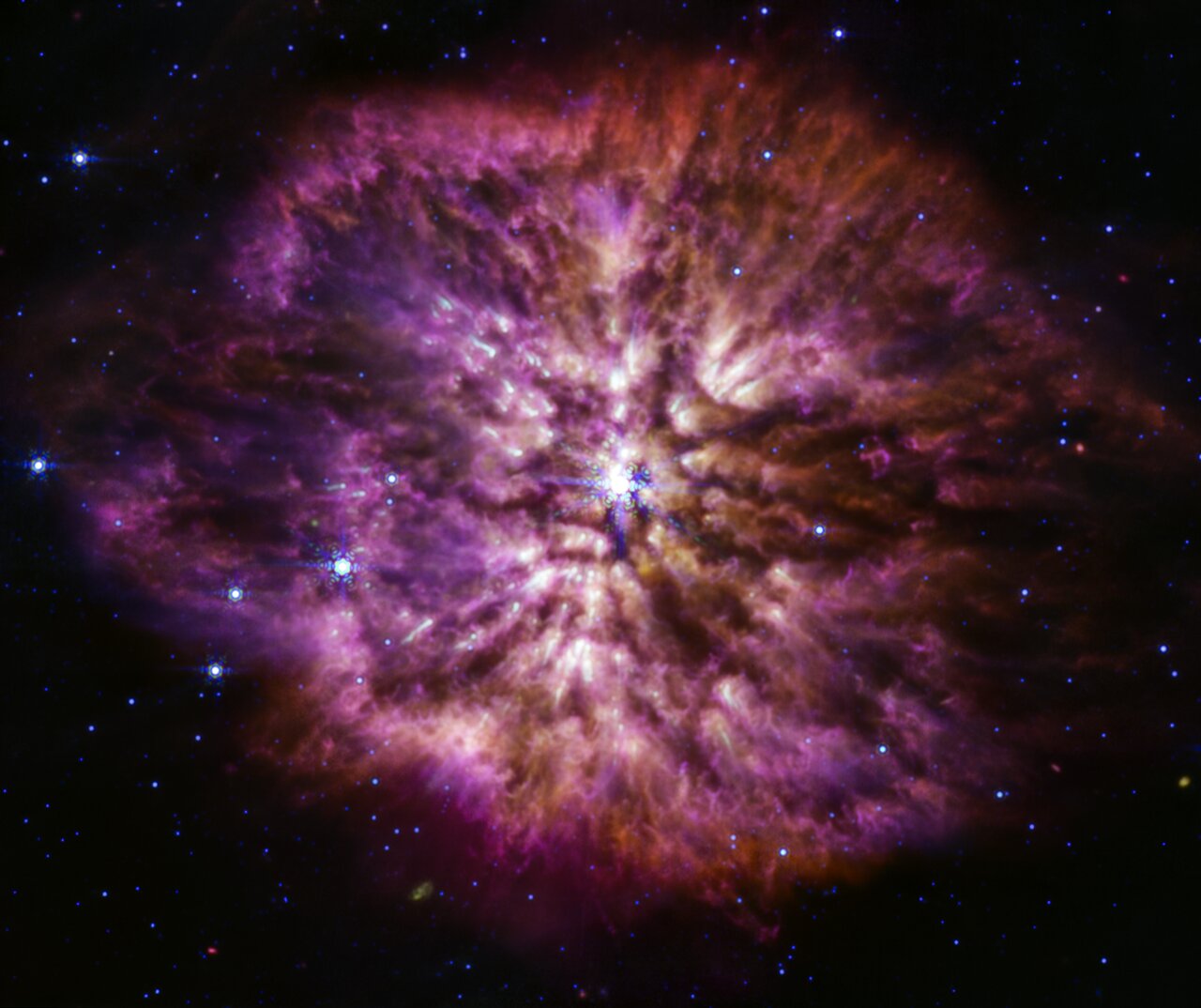About the Object
Coordinates
| Position (RA): | 19 11 30.90 |
|---|---|
| Position (Dec): | 16° 51' 35.19" |
| Field of view: | 2.21 x 1.85 arcminutes |
| Orientation: | North is 40.6° right of vertical |
Colours & filters
| Band | Wavelength | Telescope |
|---|---|---|
|
Infrared
PAH | 7.7 μm | James Webb Space Telescope MIRI |
|
Infrared
PAH | 11 μm | James Webb Space Telescope MIRI |
| Infrared | 12 μm | James Webb Space Telescope MIRI |
|
Infrared
Silicate | 18 μm | James Webb Space Telescope MIRI |
Wolf-Rayet 124 (MIRI image)
Wolf-Rayet stars are known to be efficient dust producers, and the Mid-Infrared Instrument (MIRI) on the NASA/ESA/CSA James Webb Space Telescope shows this to great effect. Cooler cosmic dust glows at the longer mid-infrared wavelengths, displaying the structure of WR 124’s nebula. The nebula is made of material cast off from the ageing star in random ejections, and from dust produced in the ensuing turbulence. This brilliant stage of mass loss precedes the star’s eventual supernova, when nuclear fusion in its core stops and the pressure of gravity causes it to collapse in on itself, and then explode. As MIRI demonstrates here, Webb will help astronomers to explore questions that were previously only available to theory, questions like how much dust stars like this create before exploding in a supernova, and how much of that dust is large enough to survive the blast and go on to serve as a building block of future stars and planets.
Credit:NASA, ESA, CSA, STScI, Webb ERO Production Team
About the Image
| Id: | weic2307e | |
|---|---|---|
| Type: | Observation | |
| Release date: | 14 March 2023, 19:00 | |
| Size: | 4416 x 3704 px | |




